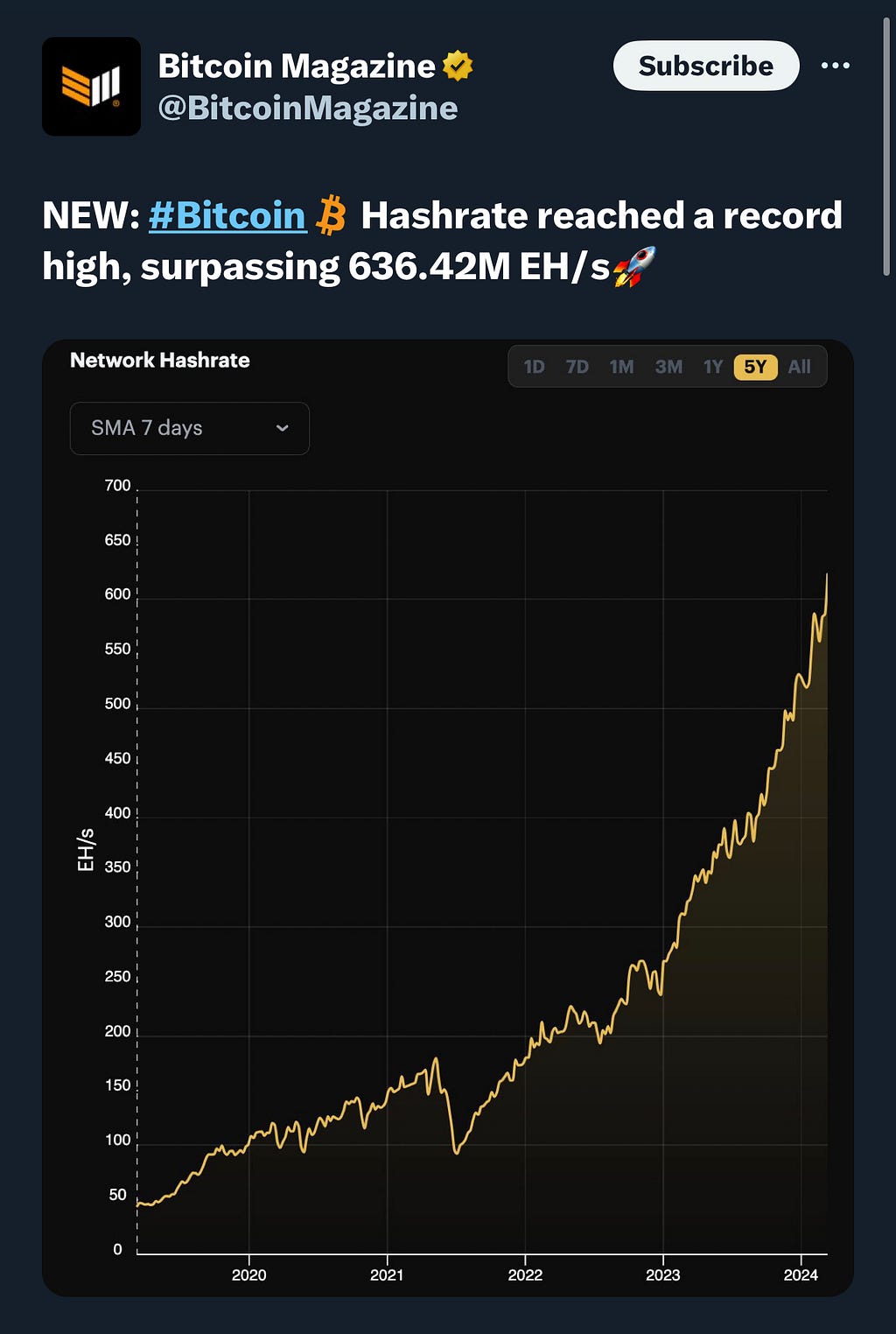In the dynamic world of cryptocurrencies, the hash rate serves as a critical barometer for the network’s health, security, and the collective confidence of its participants. Specifically for Bitcoin, the original cryptocurrency, a high hash rate not only symbolizes robust network security but also reflects substantial capital investment, highlighting the miners’ confidence and commitment to the ecosystem. This article delves into the implications of a high hash rate, underscoring its importance beyond mere numbers.

At its core, the hash rate measures the total computational power used to mine and process transactions on the Bitcoin blockchain. A higher hash rate means that more miners are actively competing to solve the mathematical puzzles that allow them to add new blocks to the blockchain, thereby earning them mining rewards in the form of new bitcoins. This intense competition necessitates significant investments in specialized mining hardware, such as Application-Specific Integrated Circuits (ASICs), which are designed exclusively for cryptocurrency mining.
The investment in mining equipment is just the tip of the iceberg. Operating these high-powered machines requires a tremendous amount of electricity, contributing to the operational costs borne by miners. The decision to allocate such resources is not made lightly; it represents a tangible vote of confidence in the future of Bitcoin. Miners are willing to incur these expenses because they believe in the long-term value and security of the network, and by extension, the cryptocurrency itself.
A high hash rate indicates a fortified network. The more computational power dedicated to mining, the more secure the network is against potential attacks, such as the infamous 51% attack, where an entity gains control of more than half of the network’s hash power, potentially enabling them to double-spend coins and halt new transactions. The astronomical costs associated with achieving such a feat on a high-hash-rate network serve as a deterrent against such malicious acts, ensuring the integrity and trustworthiness of the blockchain.
The ripple effects of these investments extend beyond the mining community. As miners deploy vast amounts of capital into hardware and electricity, they inadvertently contribute to the development of more efficient mining technologies and possibly the exploration of renewable energy sources to mitigate the environmental impact of their activities. This continuous innovation not only benefits the Bitcoin ecosystem by enhancing its sustainability and efficiency but also drives technological advancements in related industries.
Furthermore, the high hash rate serves as an indicator of the network’s health and its attractiveness to new miners, fostering a more decentralized and competitive mining landscape. This decentralization is crucial for the democratic ethos of Bitcoin, preventing any single entity from exerting undue influence over the network.
From a broader perspective, the hash rate and the capital it represents play a significant role in influencing investor sentiment and market dynamics. A secure and well-supported network is more likely to attract and retain investment, contributing to the overall market capitalization and stability of Bitcoin. Thus, the hash rate is a reflection of the economic ecosystem surrounding Bitcoin, encompassing the miners, investors, and users who believe in its value and utility.
A high hash rate is emblematic of the strength and vitality of the Bitcoin network. It signals substantial capital investment in mining infrastructure, underscores the network’s robust security against attacks, and reflects the confidence of the mining community in the enduring value of Bitcoin. As the blockchain and cryptocurrency industries continue to evolve, the hash rate will remain a pivotal measure of health, commitment, and confidence in the decentralized future that Bitcoin envisions.
The Significance of a High Hash Rate in Bitcoin’s Ecosystem was originally published in The Dark Side on Medium, where people are continuing the conversation by highlighting and responding to this story.

 1 month ago
25
1 month ago
25






 English (US) ·
English (US) ·